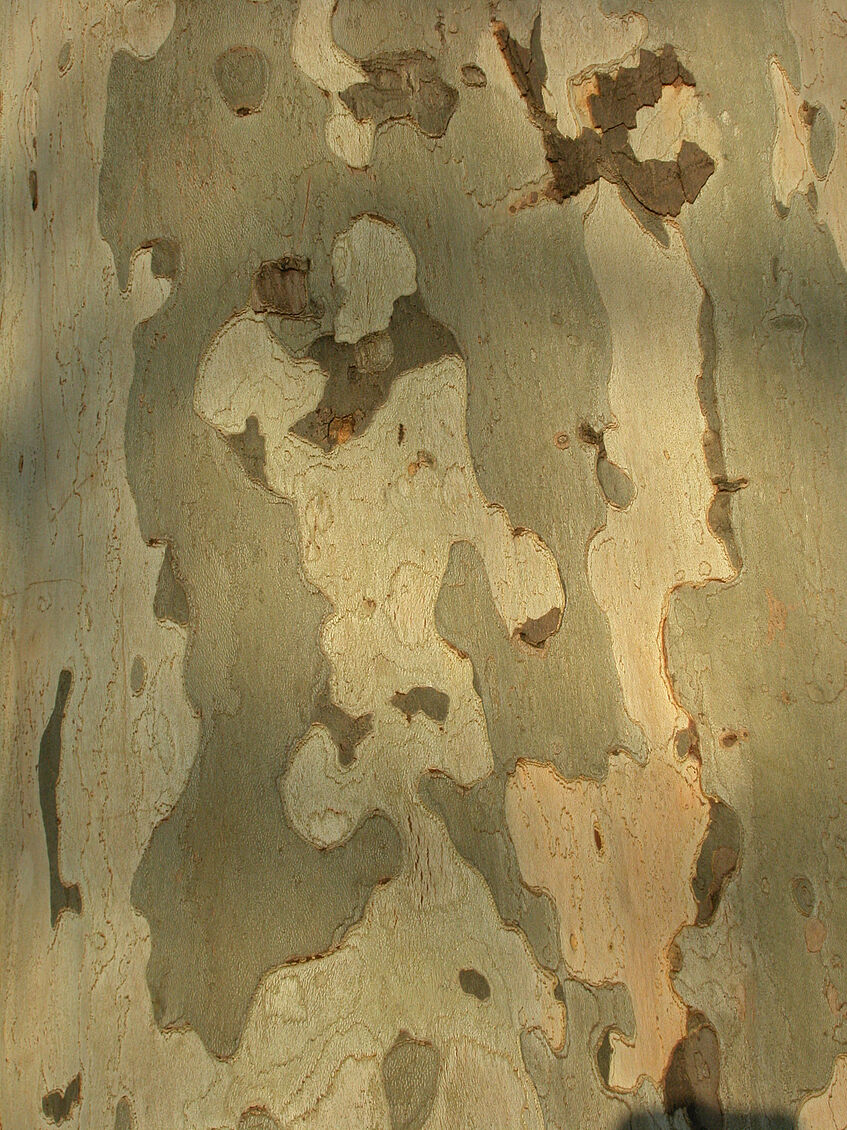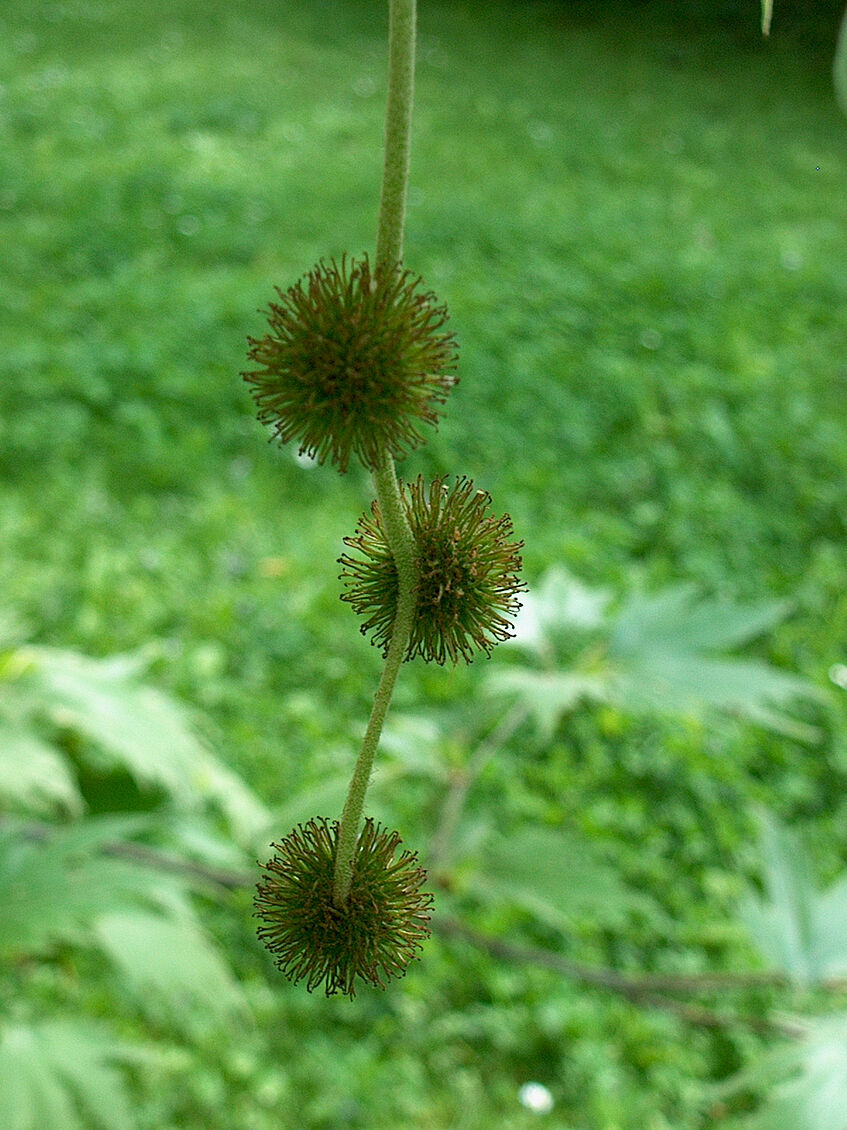Platanus sp. – Sycamores

Platanus x acerifolia © BGUW_R. Hromniak

Platanus x acerifolia © BGUW_R. Hromniak

Platanus orientalis © BGUW_R. Hromniak

Platanus orientalis © BGUW_R. Hromniak
Location in Garden: Near the entrance; areas 5, 8, 15
The sycamores (family Platanaceae) are well known as street and park trees in Vienna. The small family consists of the genus Platanus, which contains 10 species. Two species are distributed in the Old World, and these have become naturalized in North America. Their name comes from the Greek "platys" (meaning "wide"), which refers to the very broad leaves.
In the Botanical Garden we have the Oriental Sycamore (Platanus orientalis) and the North American Sycamore (P. occidentalis) as well as the hybrid between the two, which is called the Oak-leaved Sycamore (P. x hispanica).
Platanus orientalis comes originally from southern Europe and the Near East. It has a trunk to three meters in diameter, a very broad crown, and dissected leaves with 5-7 lobes. It is relatively slow growing and adapted to warmer climates. It is noteworthy that this species is almost completely resistant to a damaging fungus (Apiognomonia errabunda [= Gnomonia veneta]), which causes leaf-spotting or leaf-fall disease. This fungus attacks the North American Sycamore by causing drying out of the spring foliage, and as a result some of the young branches die back. Brown spots may appear on the leaves, and leaf loss may also occur.
The species from North America, P. occidentalis, is fast-growing and has 3-lobed leaves. This species is more cold resistant and is therefore better suited as a park tree than P. orientalis. The North American Sycamore grows in its home range up to 50 m tall, but in Europe it reaches only 35-40 m. The wood is used for carpentry, paneling, and paper-making and is especially suitable for woodworking.
The hybrid (Oak-leaved Sycamore) between P. orientalis and P. occidentalis has inherited the positive features of the two parents. It is rapidly growing, frost-hardy, and not so susceptible to attack by debilitating fungi. The hybrid, therefore, is usually more widely planted in parks and along city avenues. It is sometimes written that the hybrid is nothing more than a mutant form of P. occidentalis, but this is incorrect.
Although the sycamore is often planted on city avenues, especially to serve as a windbreak, it is not an ideal street tree. Older individuals can develop very wide-spreading branches, providing a truly majestic appearance, but sometimes not fitting well into the restricted space available. A magnificent example is on Rennweg in front of the Institute of Botany (= Biodiversity Center), which was planted toward the end of the 18th century under the supervision of the Director Nikolaus Jacquin. The crown of this individual takes up half of the street area and extends up to the height of the neighboring five-story buildings.
